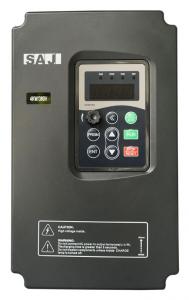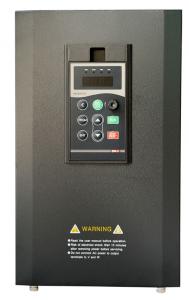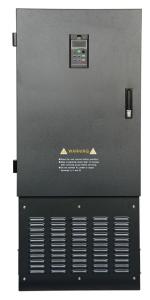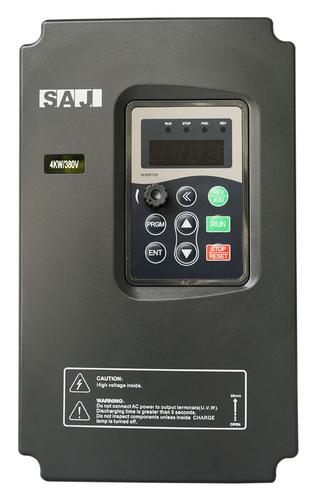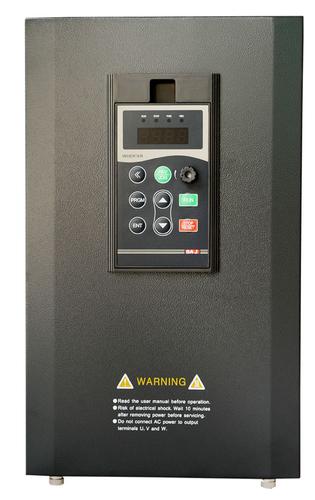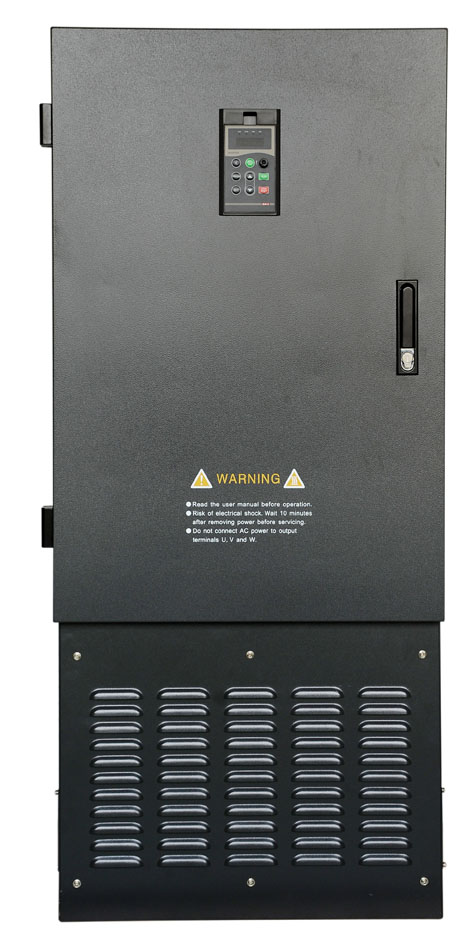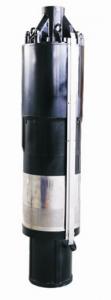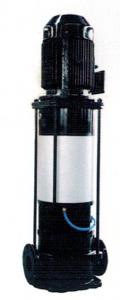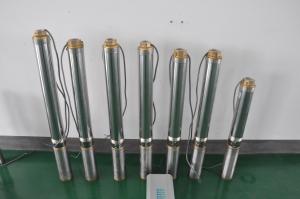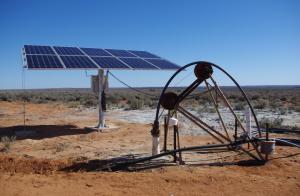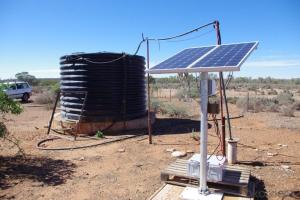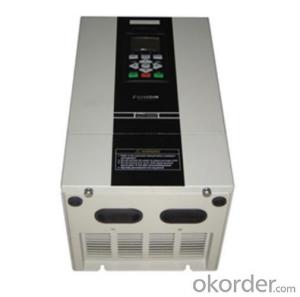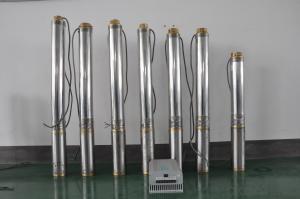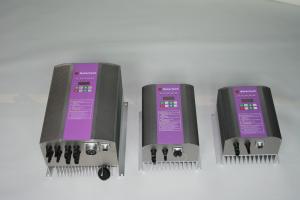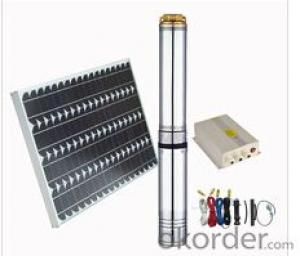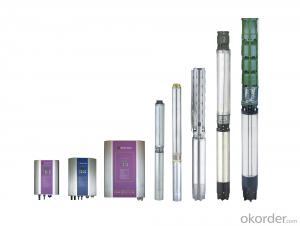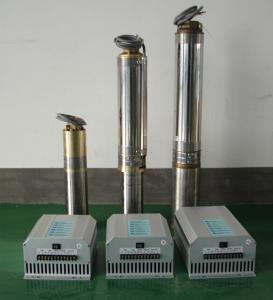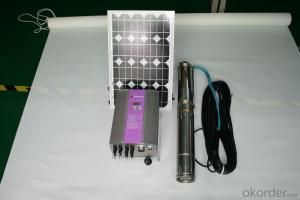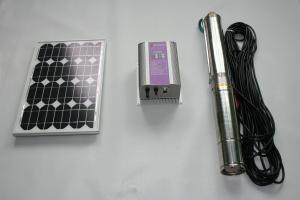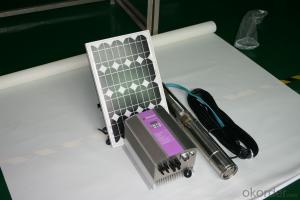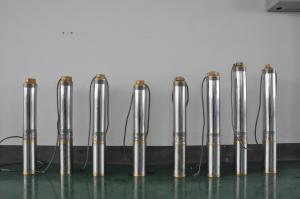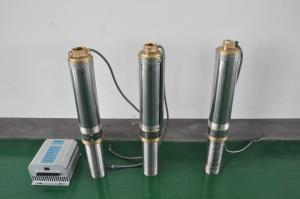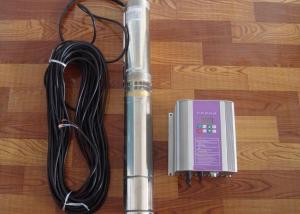Se1 Solar Pump Controller Suitable for Different Areas
- Loading Port:
- Guangzhou
- Payment Terms:
- TT OR LC
- Min Order Qty:
- 1 watt
- Supply Capability:
- 1000 watt/month
OKorder Service Pledge
OKorder Financial Service
You Might Also Like
Advantages of SAJ solar pumping system
■ The system can carry out independent power supply and solve the water problem in off-grid regions.
■ MPPT function of solar inverter is excellent in tracing the maximum power point with high reliability and quick response.
■ The system is environmentally friendly without storage battery.
■ Intelligent IGBT modules of high performance inside can make the conversion efficiency up to 98% and above.
■ Users can select the function of water-level detecting to prevent the system from overflow and dry extraction.
Applications:
Barren Mountain Water Supply, Environment Improvement, Meadow Water Supply, Reducing Water Loss, Life Water Supply and so on.
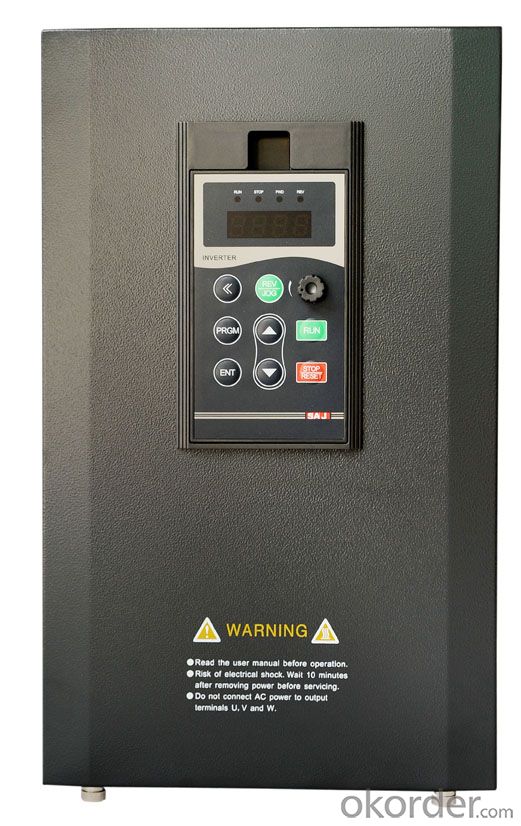
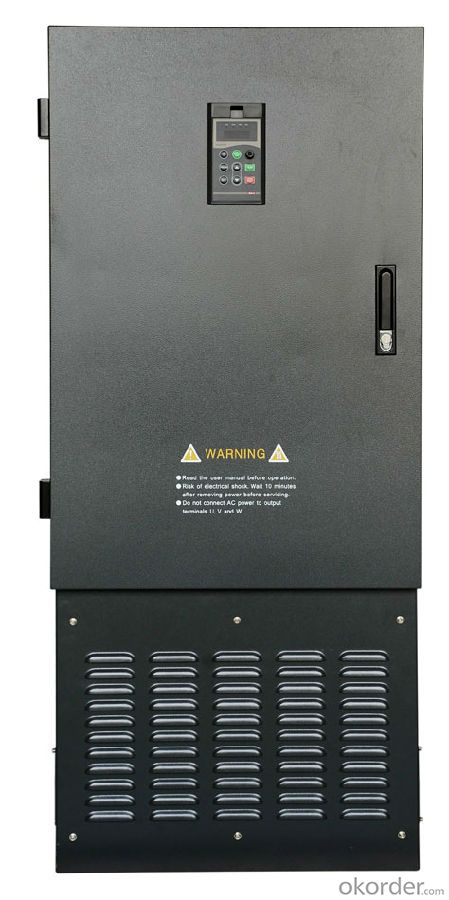
FAQ
1. How long will my inquiry get response?
Your inquiry related to our products or prices will be replied within 24 hours.
2. Can I get professional service and suggestion?
Well-trained and experienced staffs to answer all your questions in fluent English.
3. Do you accept OEM or customized design?
OEM & ODM, any your customized lightings we can help you to design and put into product.
4. What if I need specific design?
Distributorship are offered for your unique design and some our current models.
- Q: How does a solar pump handle water with high levels of algae?
- A solar pump can handle water with high levels of algae by using a filtration system. The pump draws water from the source, passes it through a filter which removes algae and other impurities, and then pumps the clean water to the desired location. This filtration process helps maintain the efficiency and longevity of the solar pump while ensuring that the water remains algae-free.
- Q: Can a solar pump be used in areas with limited access to skilled labor for repairs?
- Yes, a solar pump can be used in areas with limited access to skilled labor for repairs. Solar pumps are designed to be low maintenance and have fewer moving parts compared to traditional pumps, reducing the need for frequent repairs or skilled labor. Additionally, solar pumps are often simple to install, operate, and troubleshoot, making them suitable for use in remote or rural areas where skilled labor may be scarce. The use of solar pumps can provide a reliable and sustainable solution for water pumping needs in such areas.
- Q: How do solar pumps handle water with high turbidity or particulate matter?
- Solar pumps can handle water with high turbidity or particulate matter by using a combination of filtration and robust design features. These pumps are equipped with built-in filters that help remove large particles and sediment from the water before it enters the system. Additionally, some solar pumps are designed with self-cleaning mechanisms that prevent clogging and maintain high performance even in the presence of turbidity or particulate matter. This ensures that the pumps can effectively handle water with high levels of impurities without compromising their functionality.
- Q: Can a solar pump be used in areas with limited access to water usage?
- Yes, a solar pump can be used in areas with limited access to water usage. Solar pumps are designed to operate using solar energy, which means they do not require electricity from the grid or fuel to function. This makes them ideal for remote areas where access to water and electricity may be limited. Solar pumps can be used to extract water from various sources such as wells, rivers, lakes, or even underground aquifers, providing a sustainable and reliable water supply for communities in water-stressed regions.
- Q: How long does it take for a solar pump to pay for itself?
- The length of time it takes for a solar pump to become financially viable can differ based on various factors, including the initial pump cost, the volume of water it pumps, and the expense of alternative pumping methods. However, on average, a typical solar pump can recoup its investment within a span of 2 to 5 years. Solar pumps provide a financially feasible and sustainable option compared to traditional pumps that rely on fossil fuels or grid electricity. Though the initial investment for a solar pump may be higher than that of conventional pumps, the ongoing expenses are significantly lower due to the availability and cost-effectiveness of solar energy. The payback period of a solar pump primarily depends on the savings derived from reduced energy consumption. By eliminating the need for costly fuels or electricity, solar pumps bring substantial long-term monetary savings. Additionally, solar pumps necessitate minimal maintenance and possess a longer lifespan, further minimizing operational costs. The payback period can also be influenced by the amount of water the pump can extract. If the solar pump is installed in an area with high water demand and usage, it can recoup its investment more quickly. Conversely, if the water requirements are low, it may take a longer duration for the pump to recover its initial expense. Lastly, the cost of alternative pumping methods plays a vital role in determining the payback period. If alternative sources of pumping, such as diesel or electricity, are expensive, the solar pump can recoup its investment relatively faster. Conversely, if the alternative methods are cheaper, it may take a bit longer for the solar pump to recover its initial cost. To conclude, although the payback period of a solar pump can vary based on several factors, it typically ranges from 2 to 5 years. Investing in a solar pump not only accelerates cost recovery but also brings long-term financial savings, reduced environmental impact, and enhanced energy independence.
- Q: Are there any limitations on the vertical distance water can be pumped with a solar pump?
- Yes, there are limitations on the vertical distance water can be pumped with a solar pump. The lift capacity of a solar pump depends on factors such as the power of the solar panel, the efficiency of the pump, and the size and type of the pump. Generally, solar pumps are capable of lifting water to a maximum vertical distance of around 100-200 feet. However, it is important to consider the specific specifications and capabilities of the particular solar pump being used.
- Q: Can solar pumps be used for water supply in off-grid cabins or vacation homes?
- Yes, solar pumps can be used for water supply in off-grid cabins or vacation homes. Solar pumps are an efficient and sustainable solution that can provide a reliable source of water without the need for grid electricity. They harness solar energy to power the pump, allowing for a continuous supply of water even in remote locations. This makes them an ideal choice for off-grid cabins or vacation homes where access to traditional power sources may be limited.
- Q: How does a solar pump help in reducing the risk of water scarcity?
- A solar pump helps in reducing the risk of water scarcity by harnessing solar energy to power the pump, eliminating the need for electricity or fuel. This makes it more accessible and affordable for communities in remote areas to access clean water for irrigation, drinking, and other needs. Additionally, solar pumps are environmentally friendly as they do not contribute to greenhouse gas emissions, thus promoting sustainability and reducing the strain on finite water resources.
- Q: Can a solar pump be used in areas with harsh weather conditions?
- Yes, a solar pump can be used in areas with harsh weather conditions. Solar pumps are designed to be durable and withstand extreme weather conditions such as high temperatures, heavy rains, and strong winds. They are built with weather-resistant materials and often have protective features like waterproofing and dustproofing. Additionally, solar pumps are designed to work efficiently even in low light conditions, allowing them to continue functioning in cloudy or overcast weather.
- Q: Can a solar pump be used in areas with unstable ground conditions?
- Yes, a solar pump can be used in areas with unstable ground conditions. The installation of a solar pump typically involves anchoring the pump system to ensure stability. Additionally, solar pumps are often lightweight and compact, making them suitable for deployment in various ground conditions. However, it is important to assess the specific ground conditions of the area and take appropriate measures to ensure proper installation and stability of the solar pump system.
Send your message to us
Se1 Solar Pump Controller Suitable for Different Areas
- Loading Port:
- Guangzhou
- Payment Terms:
- TT OR LC
- Min Order Qty:
- 1 watt
- Supply Capability:
- 1000 watt/month
OKorder Service Pledge
OKorder Financial Service
Similar products
Hot products
Hot Searches
Related keywords
